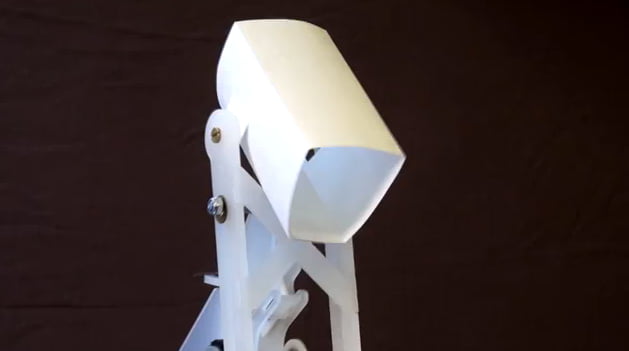Renowned science fiction writer Isaac Asimov conjured up a future in which robots are a part of our everyday life, serving as laborers (the word “robot” comes from the Russian word for worker) and companions.
While the year 2014 does not have humanoids walking around, carrying our bags and driving us around, they are still very much here, and our reliance on them is growing .
One example for that is Kip 1, the new Israeli robot that reacts “emotionally” to the way you talk.
Related articles
- Robots Are What Makes This Israeli Solar Farm Super-Efficient
- MiRobot May Be The Next Revolution In Dairy Farms
Kip1, created at the miLAB (Media Innovation Lab) at the Interdisciplinary Center (IDC ) in Herzliya, is referred to by its creators as an “empathic object.” Empathic objects are robots that add empathy to human interaction. In this case, the Kip1 is able to recognize human speech and act “scared” when the speaker’s tone is aggressive.
[youtuber youtube=’http://www.youtube.com/watch?v=gOv4Q6x-RT0′]
Physically reminiscent of animation studio Pixar’s logo, the lamp-like creature gets intrigued when it hears a human voice and directs its head towards it. If the speaker becomes aggressive, Kip gets scared and trembles.
Sign up for our free weekly newsletter
Subscribe“We envision Kip1 at home, accompanying parent-child interactions, or couples interactions,” Kip’s creators say, “and hopefully increases people’s awareness to their unintended aggressive tones.”
Kip1 is controlled by an Android phone and a ioio board. The speech analysis is done on the Android, and the ioio board enables the motor control. It was created by Dr. Guy Hoffman, Dr. Oren Zuckerman, Shlomi Azoulay, Ofri Omer, Oran Peretz and Almog Ben David.
Hoffman is a roboticist who recently attained worldwide recognition with a TEDx lecture he gave entitled “Robots with ‘Soul.'” Hoffman believes that robots have a role to play in aspects of our lives that are more emotional or spiritual, like music.
Kip 1 indeed shows that while robots have proved effective in replacing manual labor or performing precision tasks, they can also be used to enhance human interaction.
[youtuber youtube=’http://www.youtube.com/watch?v=utV1sdjr4PY’]
Related posts

Editors’ & Readers’ Choice: 10 Favorite NoCamels Articles

Forward Facing: What Does The Future Hold For Israeli High-Tech?

Impact Innovation: Israeli Startups That Could Shape Our Future




Facebook comments